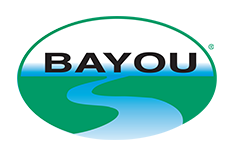Testing of pipeline coatings is critical for maintaining quality control, enabling the identification and correction of defects before deployment. This meticulous approach ensures coatings are tailored to meet the demanding environmental and operational demands, significantly enhancing pipeline performance and longevity.
in-house testing
Our state-of-the-art in-house testing facility ensures that every pipeline coating materials undergo rigorous evaluation to meet the highest standards of quality and performance. We conduct comprehensive tests including FBE cure assessment through DSC scans, porosity checks, and flexibility assessments for FBE and/or 3LP coatings. Our evaluations extend to cathodic disbondment, hot water resistance (up to 95°C), and impact testing, ensuring coatings resist environmental and mechanical stresses. For polyethylene (PE) and polypropylene (PP) coatings, we rigorously test melt flow, hardness, and density, while GSPU coatings are examined for glass content, cross-sectional integrity, thermal conductivity, and compressive strength. We assess the tensile strength and elongation at break for all our materials to ensure durability under strain. Additionally, tests such as GSPP interlayer adhesion, full-scale bend checks, penetration resistance, and specific heat capacity are performed to guarantee the highest inter-coat integrity and resilience.


3rd party testing
Third-party testing for pipeline coatings serves as an indispensable step, ensuring coatings are robust, durable, and fit for their intended service environment. This extensive testing spectrum includes fatigue tests that evaluate the coating’s ability to withstand cyclic loading, and tensioner tests that assess their performance under tension. Simulated service tests like the OHTC offer insights into how coatings behave under operational conditions. The Ring Shear test checks the resistance of coatings to shearing forces, while a series of aging tests (heat, water, and UV) determine how well the coatings can maintain their integrity and performance over time under thermal, aqueous, and ultraviolet conditions respectively. Lastly, the abrasion resistance testing evaluates the coating’s ability to resist wear from friction and physical contact. Together, these third-party assessments provide a comprehensive understanding of a pipeline coating’s resilience and longevity, ensuring they meet the required safety and quality standards for deployment in the field.
Testing, both in-house and through third parties, plays a critical role in ensuring pipeline coatings meet high standards of quality, durability, and performance, safeguarding infrastructure and operations.
